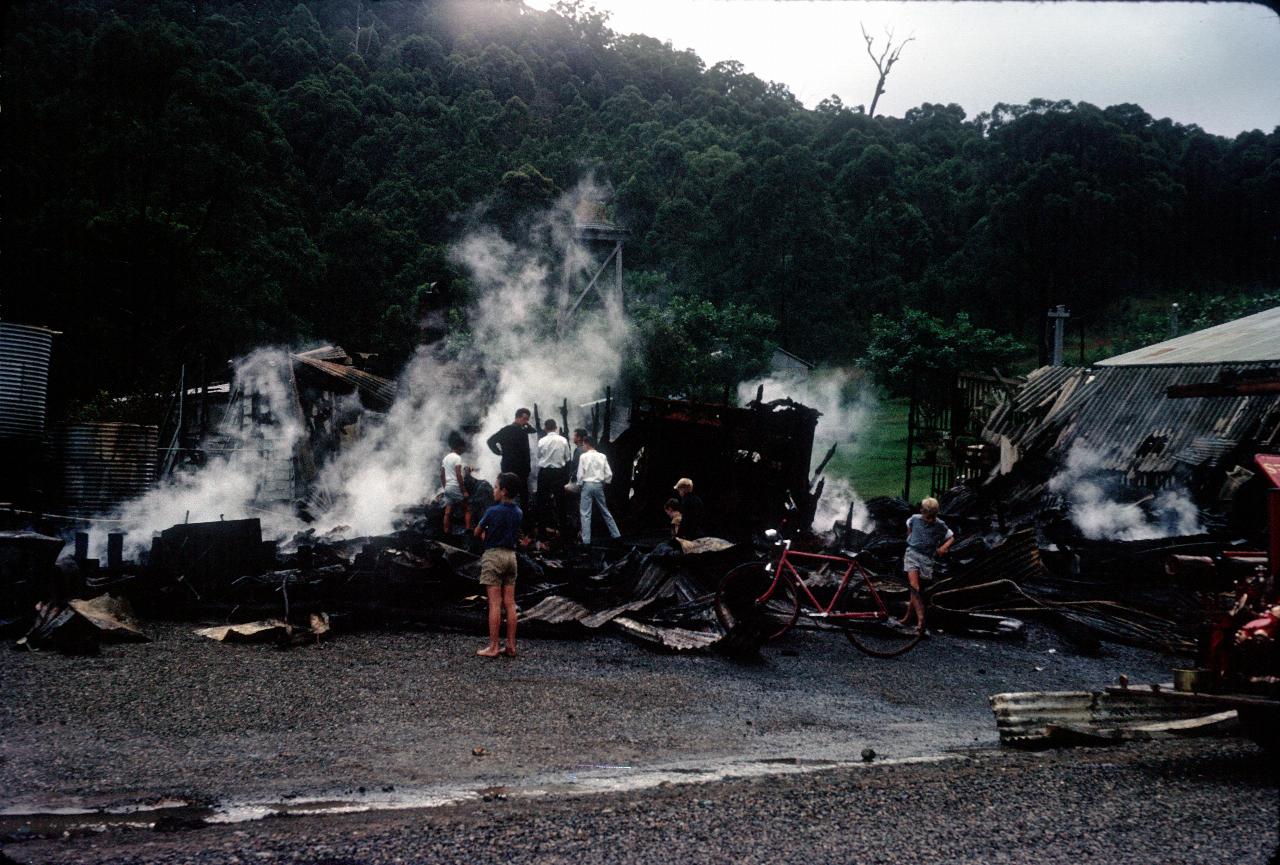
Another day, and the journey and discoveries continue.

There is a vague recollection that this conflagration took place at Telegraph Point, which was most famous as a speed trap for the speed tax collectors. It has now (observed November 2010) been bypassed which probably makes drivers feel better and gives the town's residents some peace and quiet.
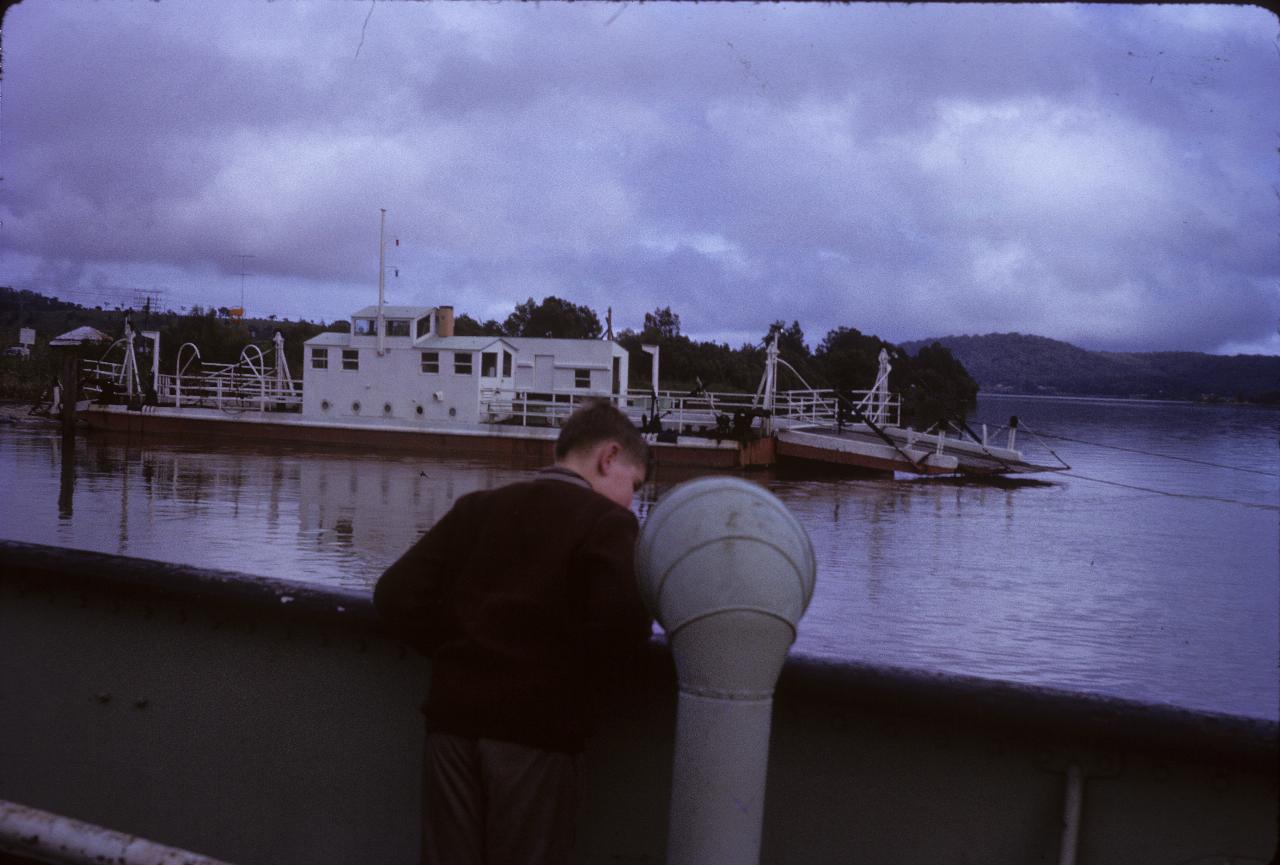
There are a number of river crossings along the north coast of NSW. At the time of these photos, a number were crossed via ferries, with the potential of a long wait during peak times. There is no record of which river this is. The ferries use cables to pull themselves across the river, rather than propellers. Given the relatively shallow river depth, simpler design and the need to pull into a ramp on the river banks, it is a good solution. Here I am checking out how the cables work, or just watching the water.
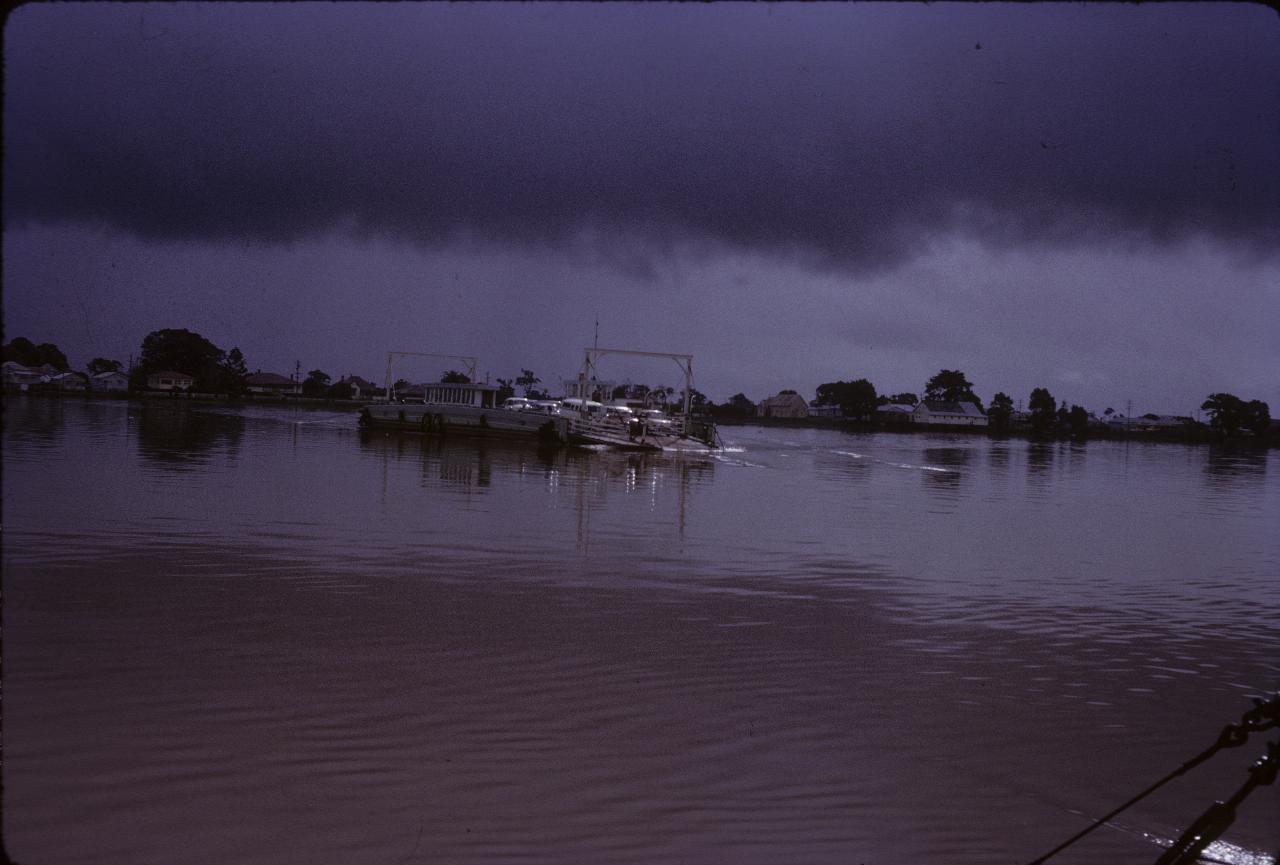
Like ships passing in the night! Given Dad's camera had no exposure meter, all photograph settings were chosen via Kodak's handy guide. Along with appropriate interpolation at times. Which is a long winded way of saying it may not have been as dark as it appears.
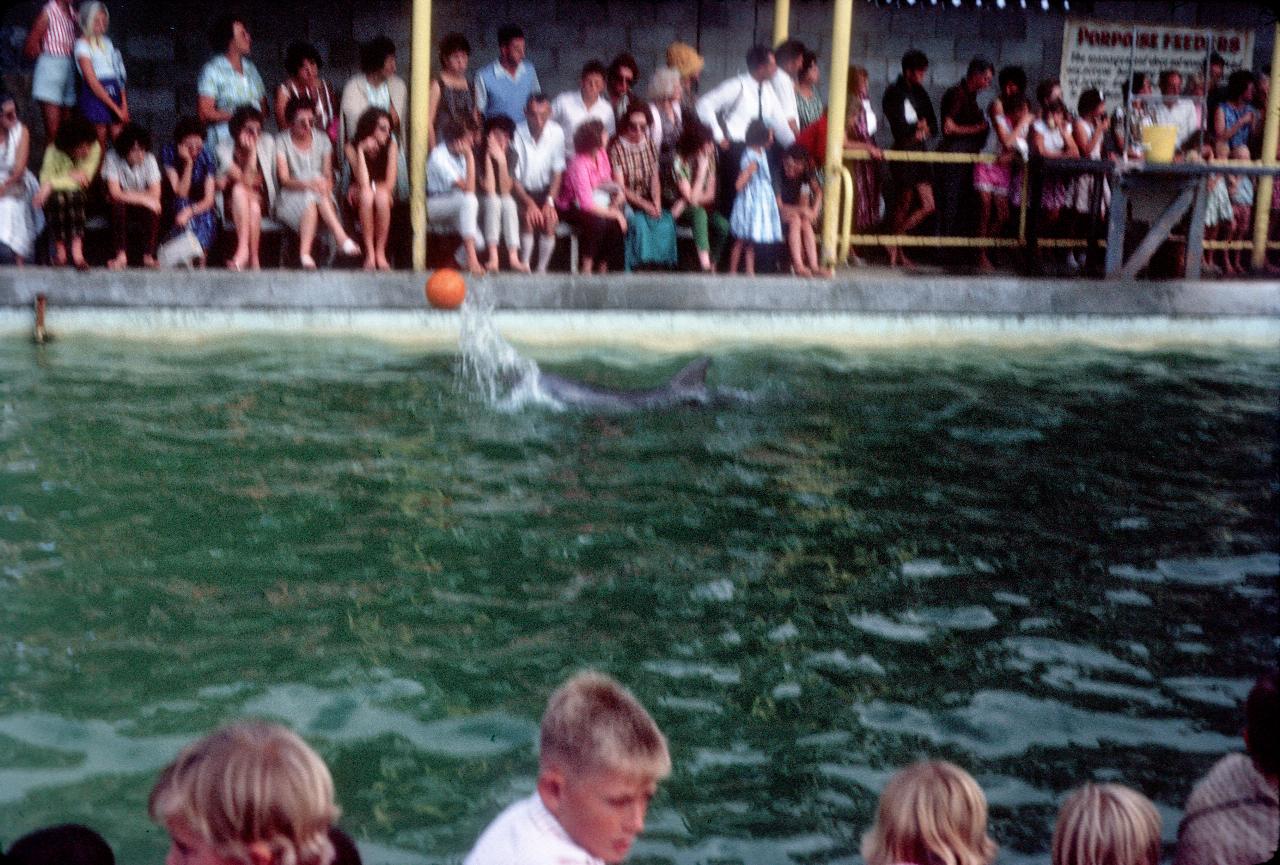
I think the only real attraction at Tweed Heads (in NSW, just south of the Queensland border) was the Porpoise Pool. Here one of the dolphins (and they were dolphins, not porpoises) is shuffling a ball around the pool
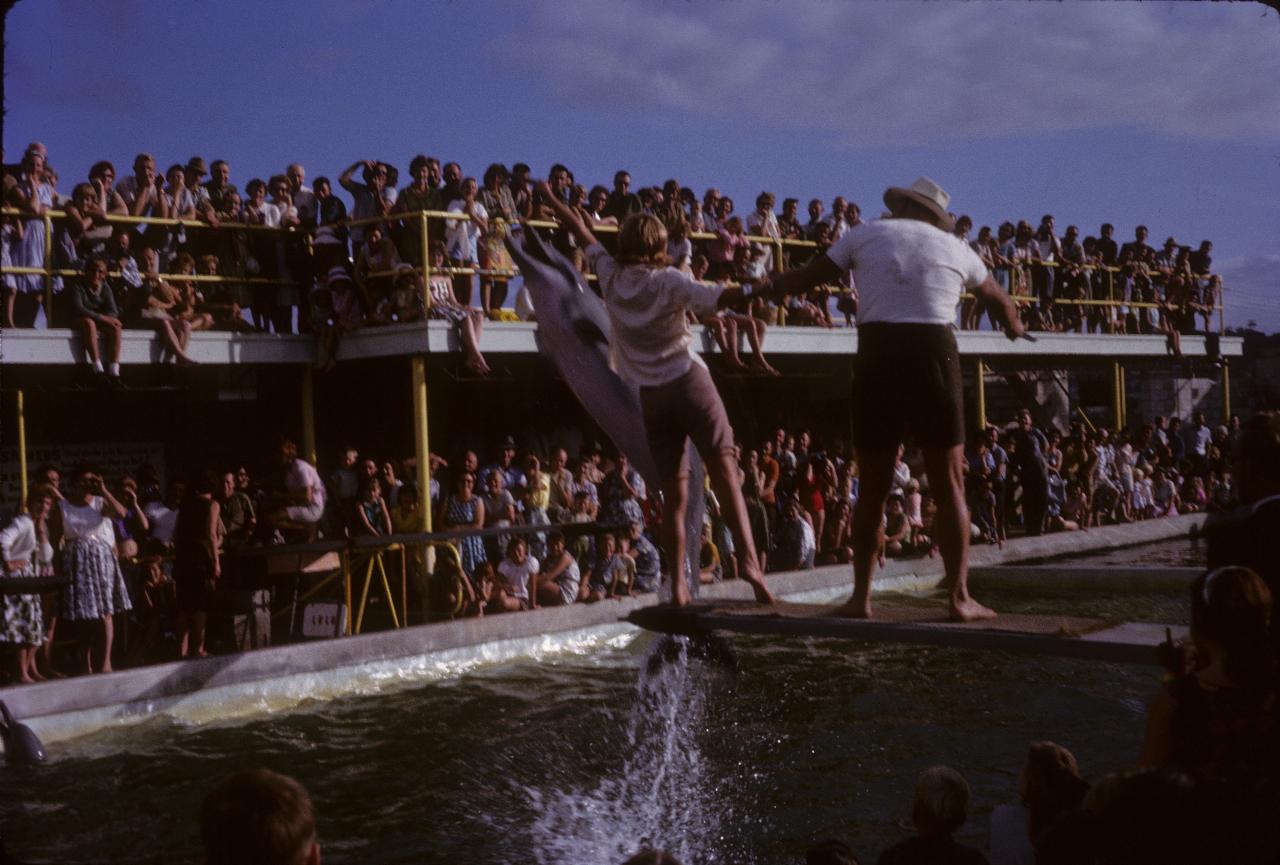
The dolphins can jut an amazing distance out of the water, as the intrepid volunteer displays. Looking at the crowd, I can see a number of safety violations that would not be allowed today. But somehow we survived!
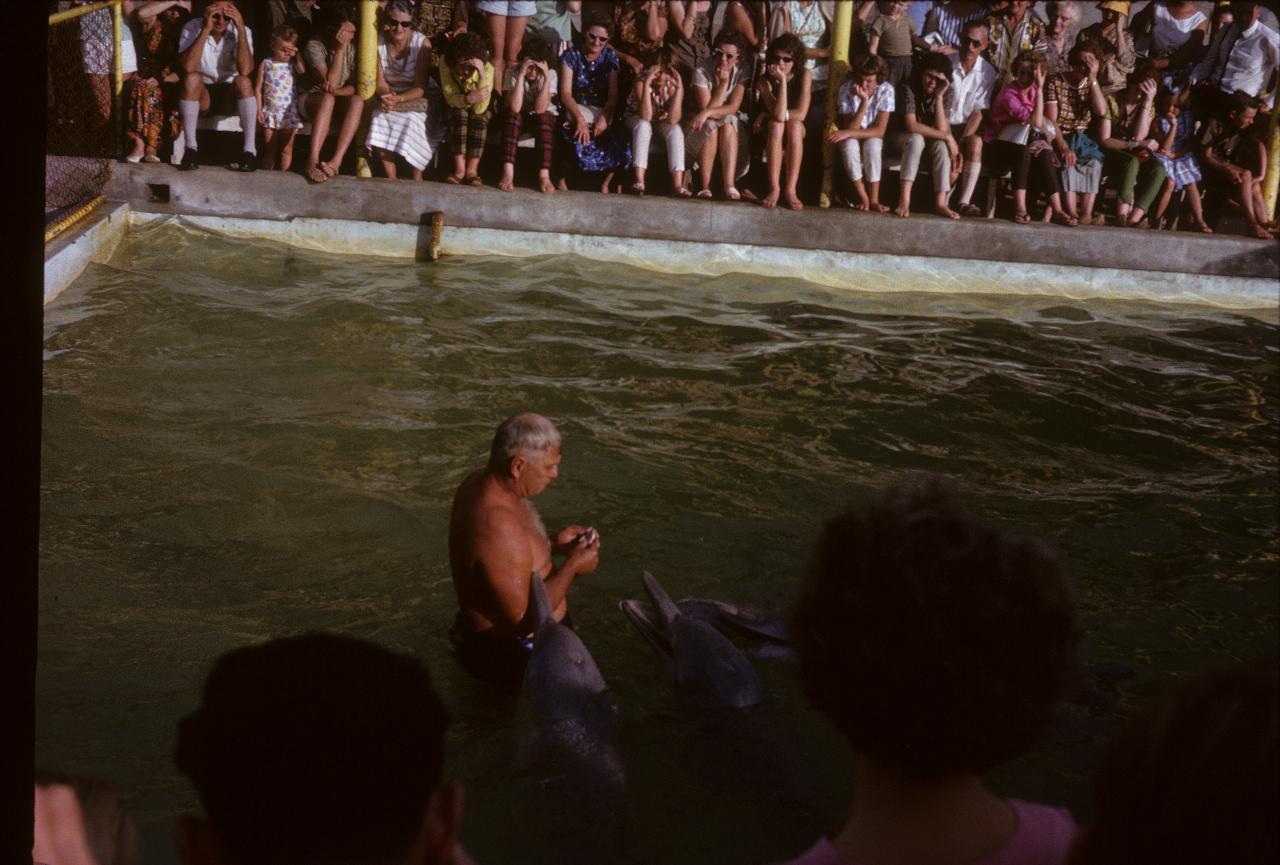
This seems to be Jack Evans, the owner of the property. There's a YouTube video clip of the pool in 1966 - runs for 80 seconds. It seems that Jack's expansion plans went awry, and he lost everything. The building shown here has been demolished and is now a parking lot.
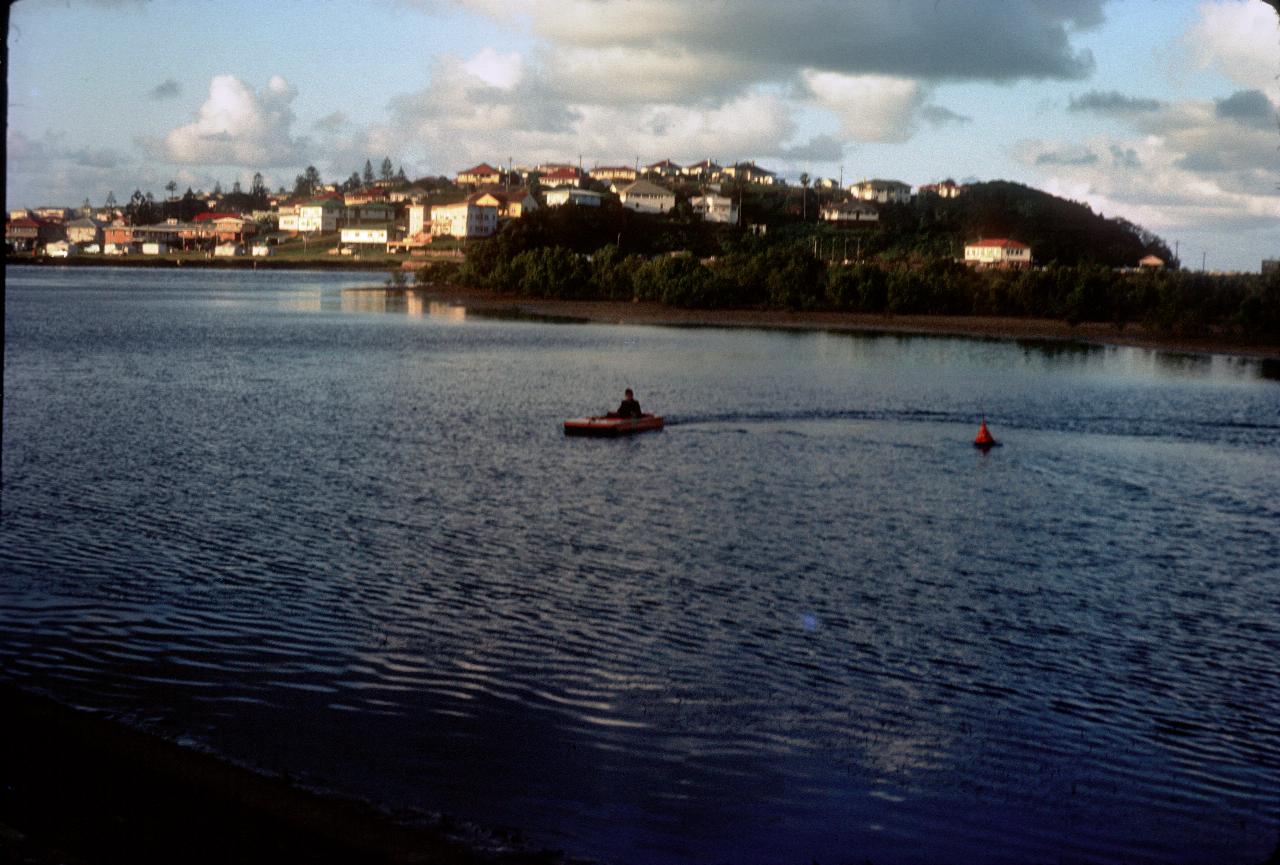
Getting my daily exercise in a paddle boat on the Tweed River.
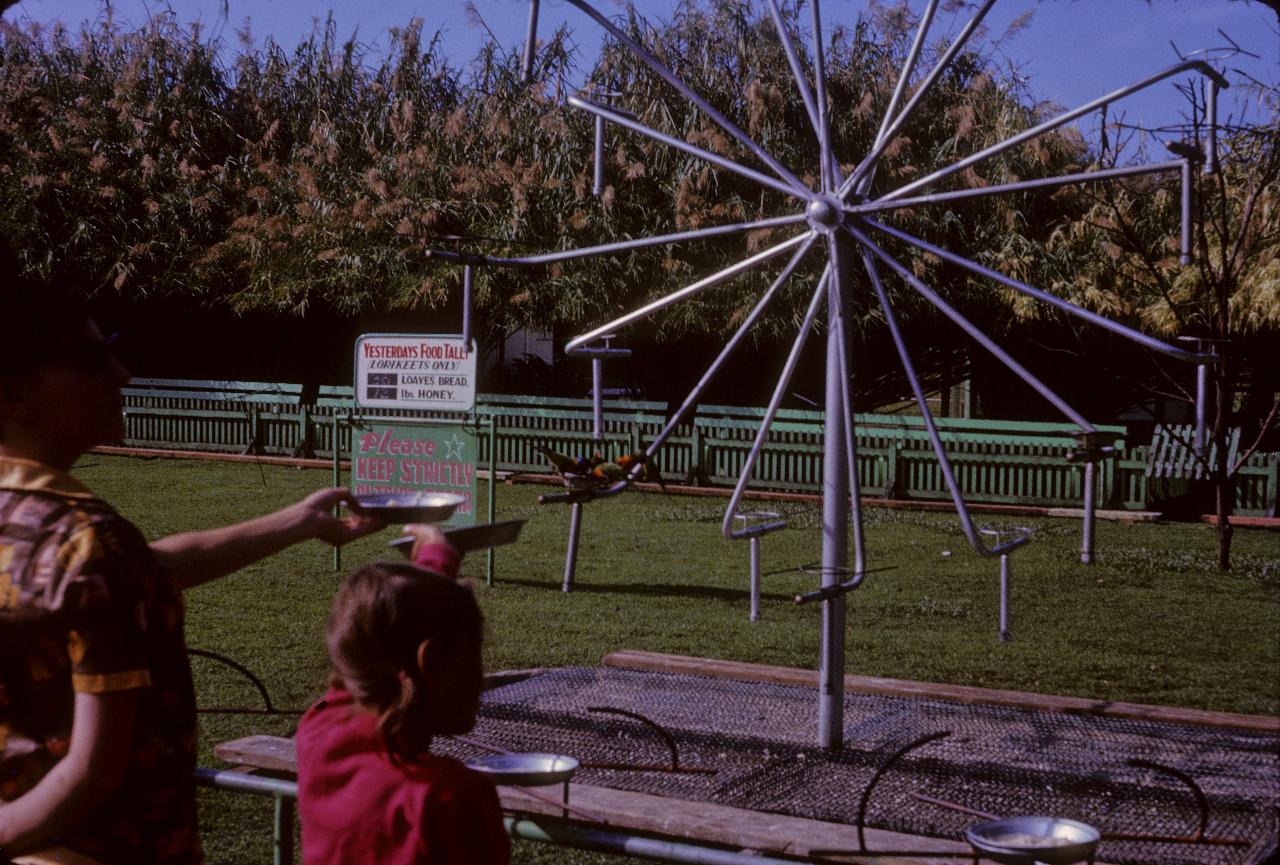
The Currumbin Bird Sanctuary was one of the early attractions along the Gold Coast. And, of course, they encourage visitors to feed the wild birds which know where they can get a good feed!
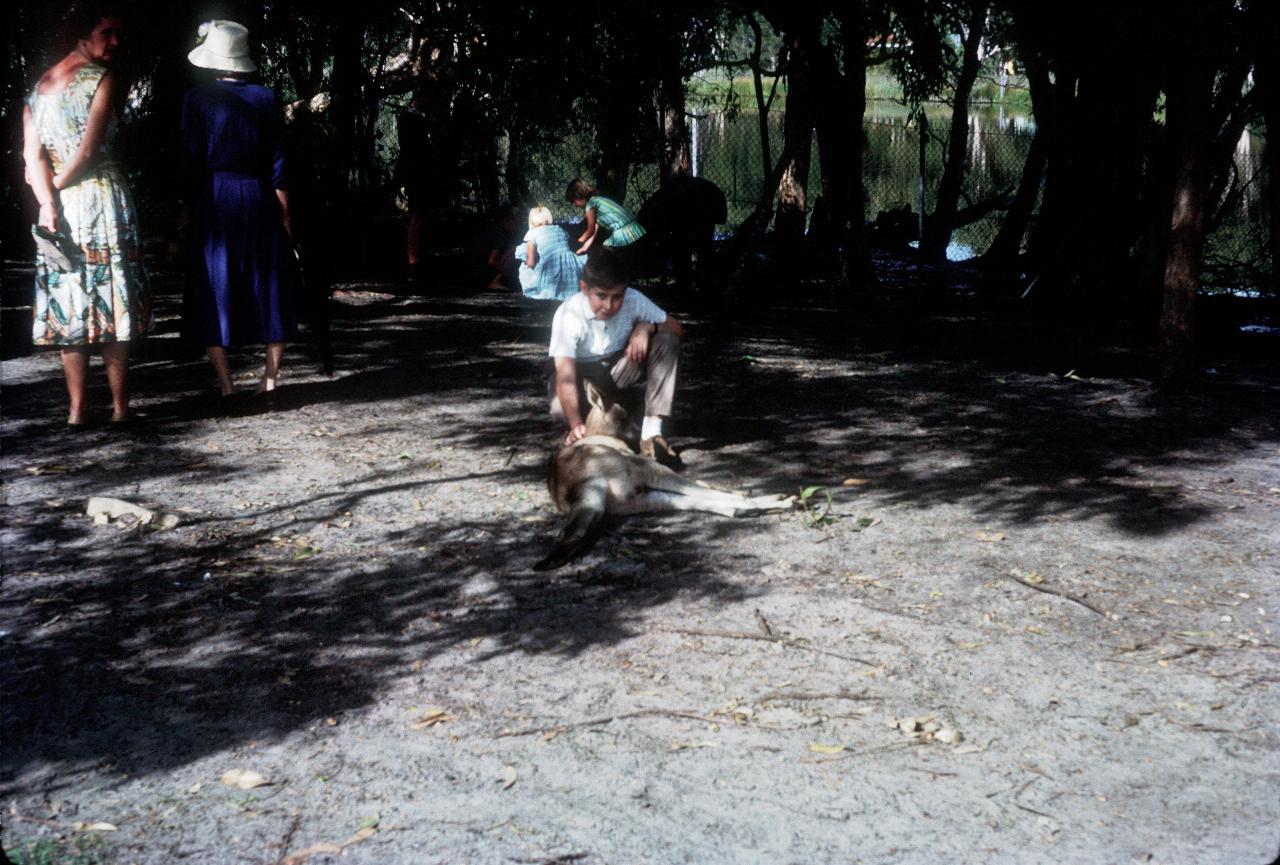
And Skippy is here too - probably before the TV series. And it didn't bite, nor did it try to tell me where the problem was!
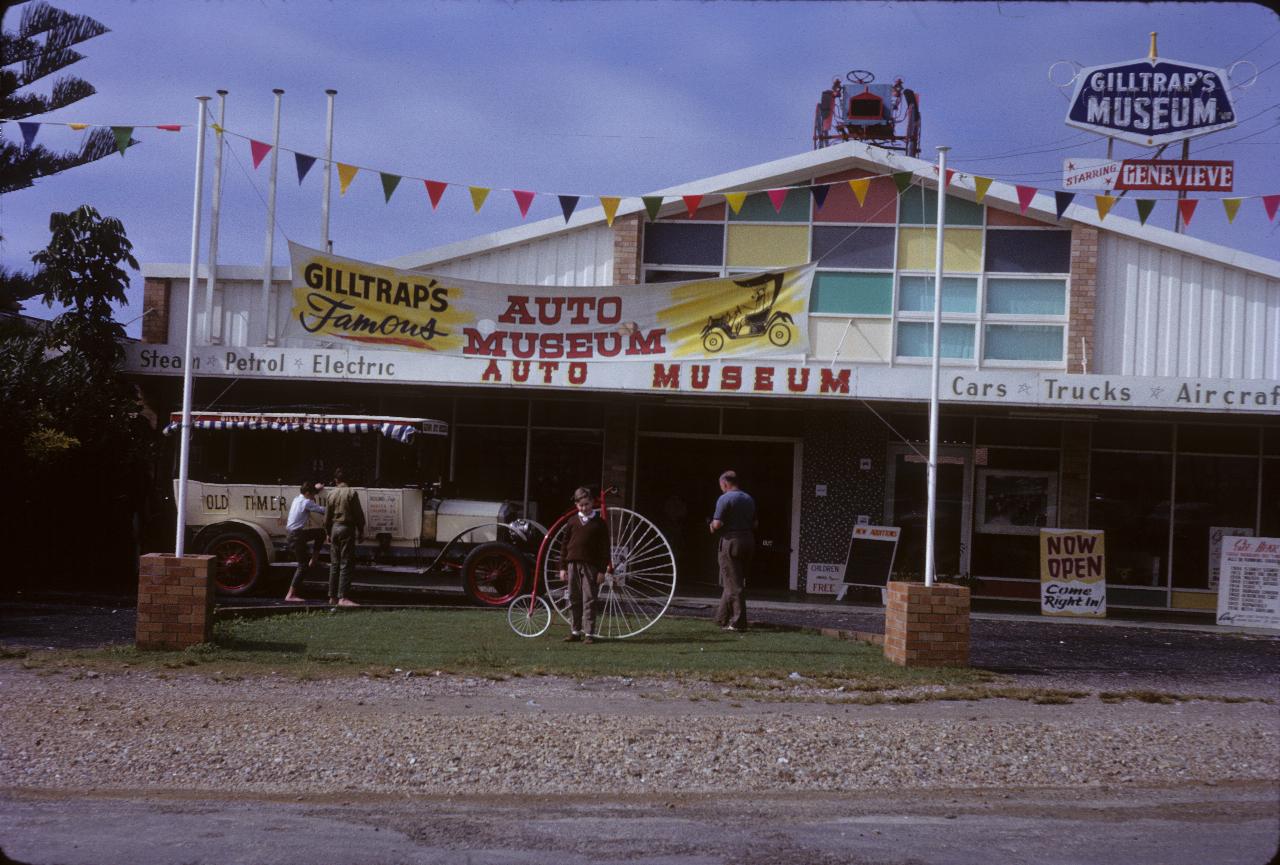
Another of the early tourist attractions was Gilltrap's Auto Museum. I remember it as being a "must see" place to go. Apparently the big claim to fame was the car Genevieve made famous in a British movie of the time and of that name. Whether it really was the one in the movie, or a replica, I have no idea. This is another attraction that did not survive.
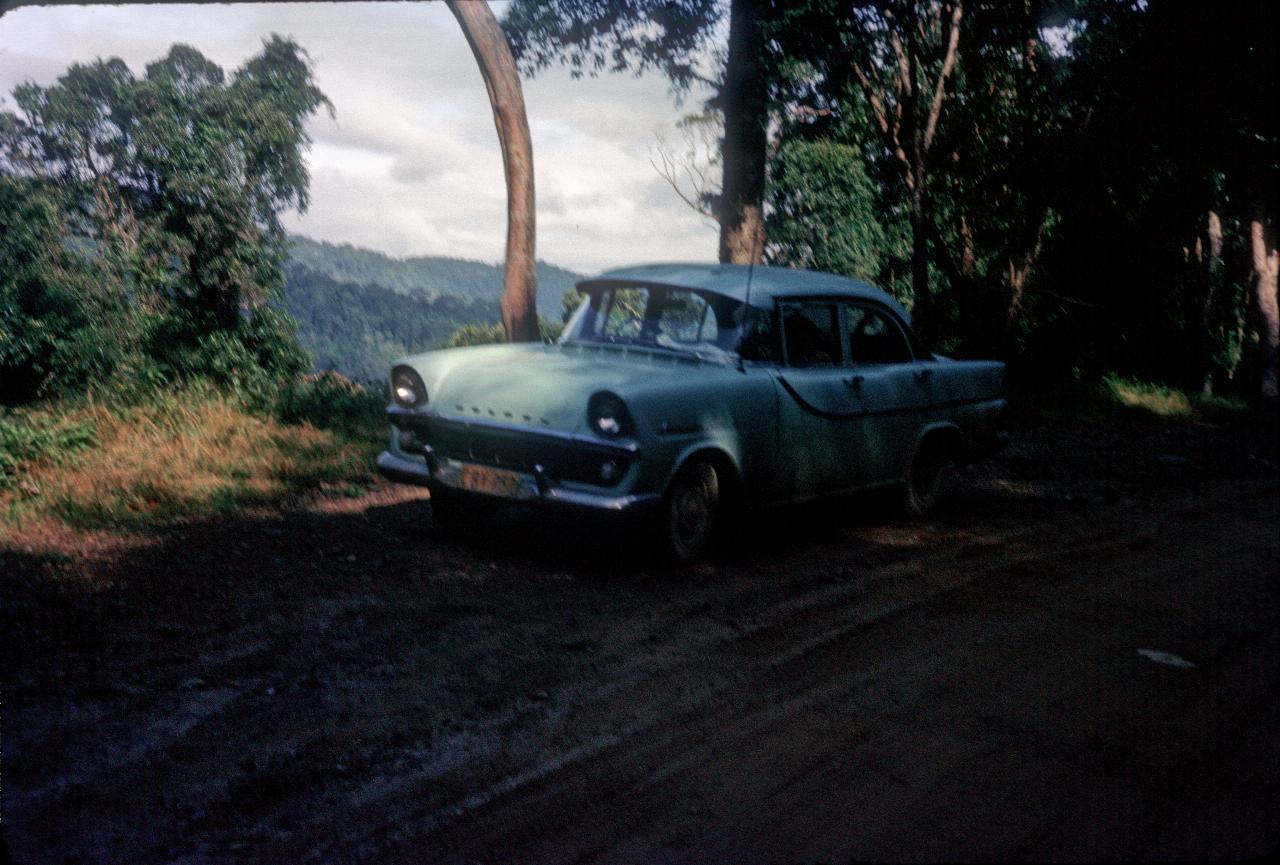
We decided to head up to Springbrook in the hinterlands. It turns out the narrow, unsealed road (in 2010 at least it's sealed, though still with a few single lane sections) operated up for 30 minutes, then down for 30 minutes. Part way up, Dad (never an especially confident driver) decided he had had enough, so we turned around and pulled over waiting for the down period to begin. This had been a very wet year, with quite a bit of flooding, as can be seen by the muddy state of the road.
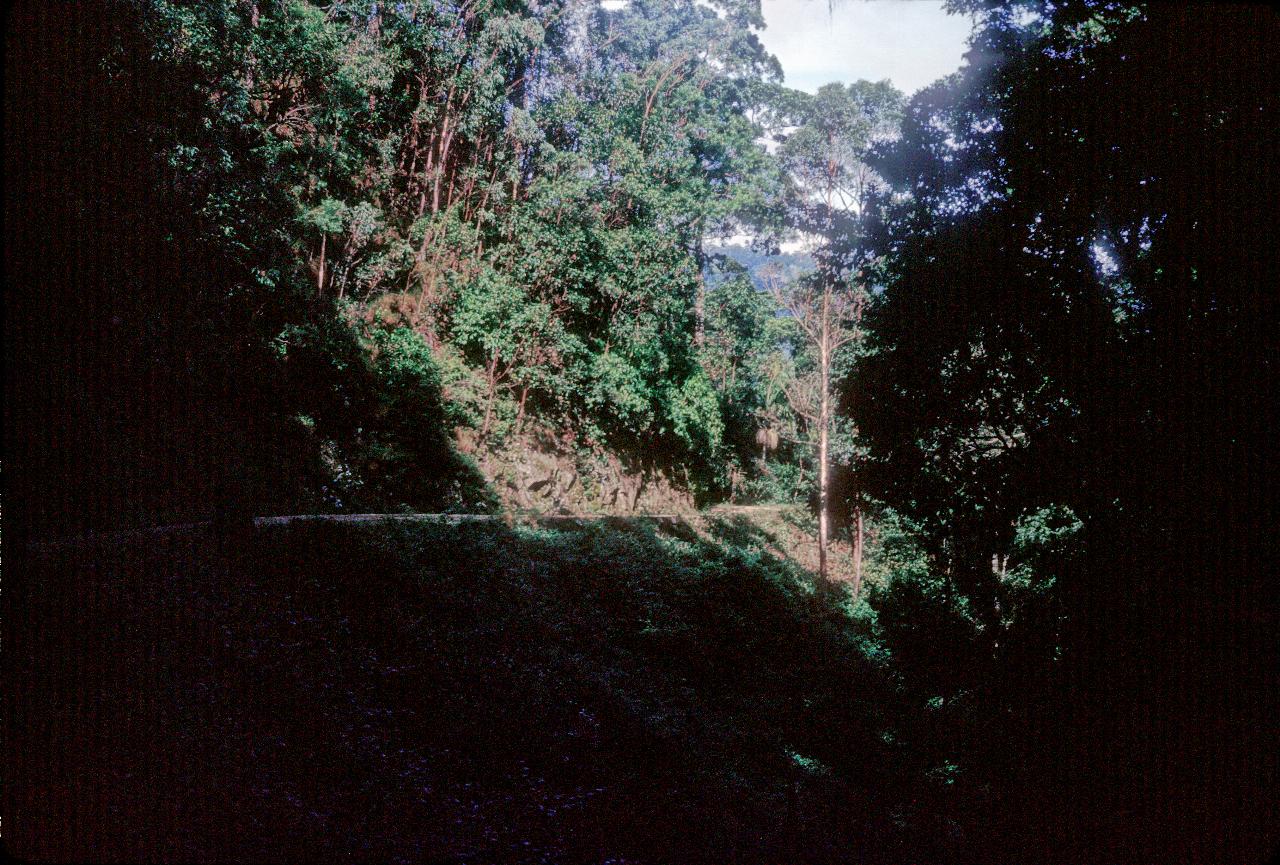
The road down the hill from where we stopped.
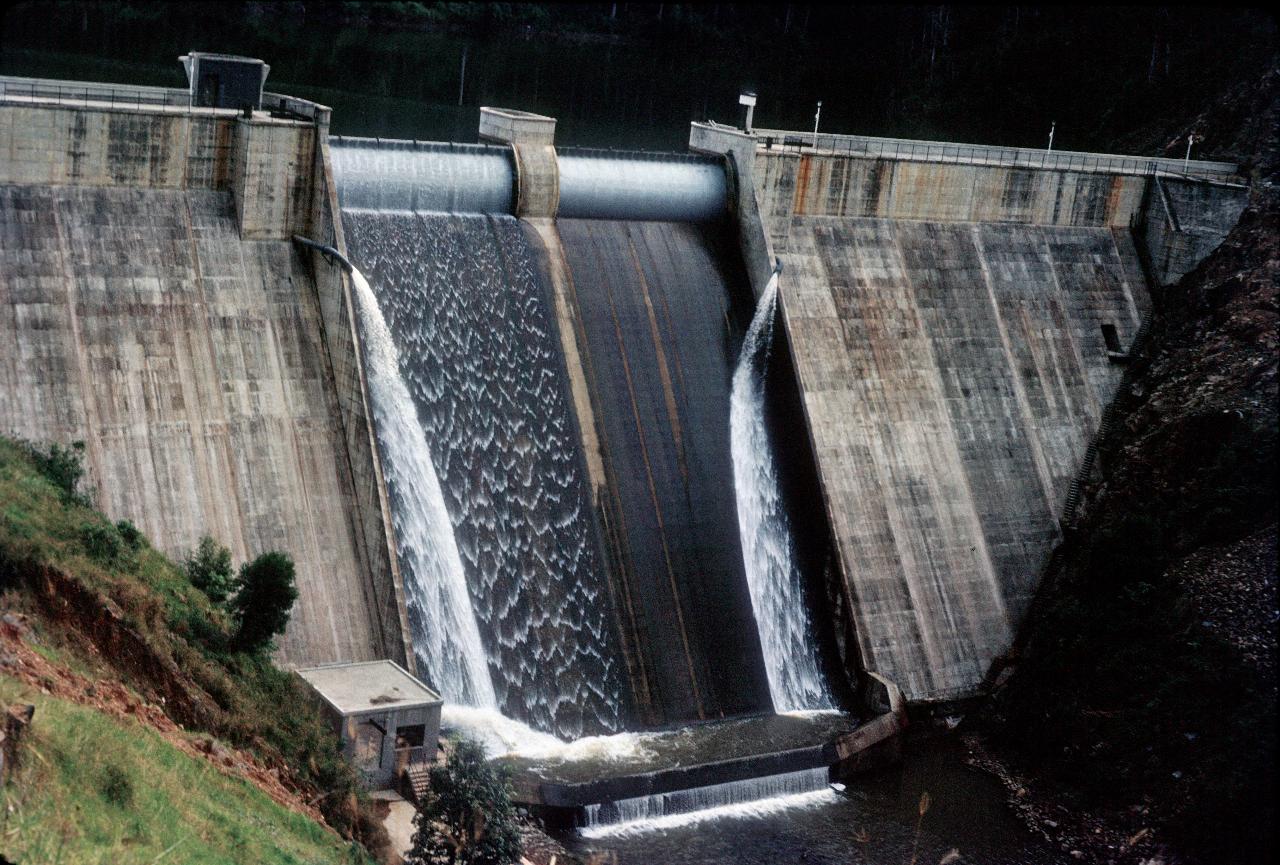
This is probably the Little Nerang Dam. As can be seen, it is full, testament to the recent rains.
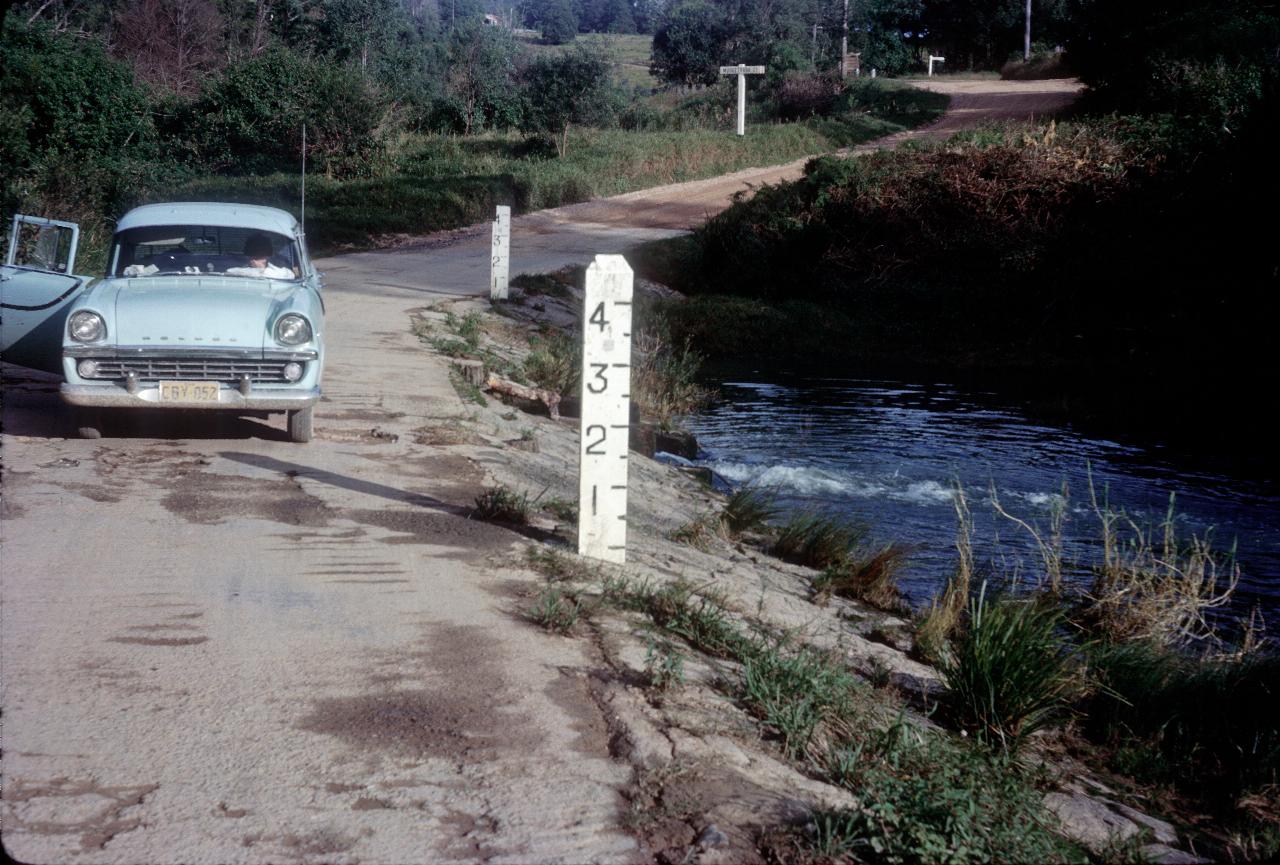
Well, at least the Mudgeeraba Creek is not flooding. There is at least one causeway still (late 2010) on the road to Springbrook.
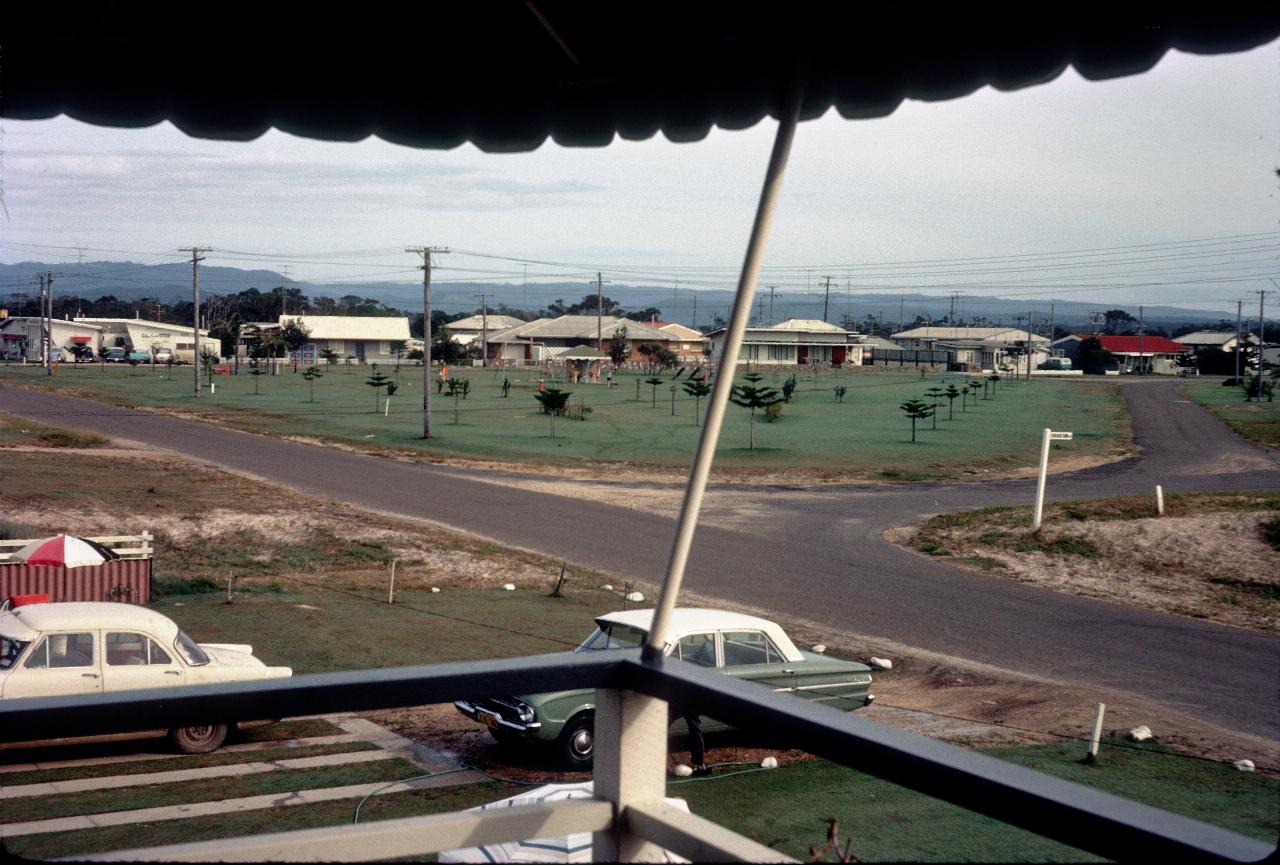
We stayed at the Hi Ho Motel. It was probably the coldest night we spent in any motel, even though it was almost on the beach. The building shown here has long gone, though there is a better one in its place, called something like the "Hi Ho Apartments". And the park is still there on Queensland Street, though likely much more developed than shown here. And the houses have pretty much all gone, replaced with high rise apartment buildings.